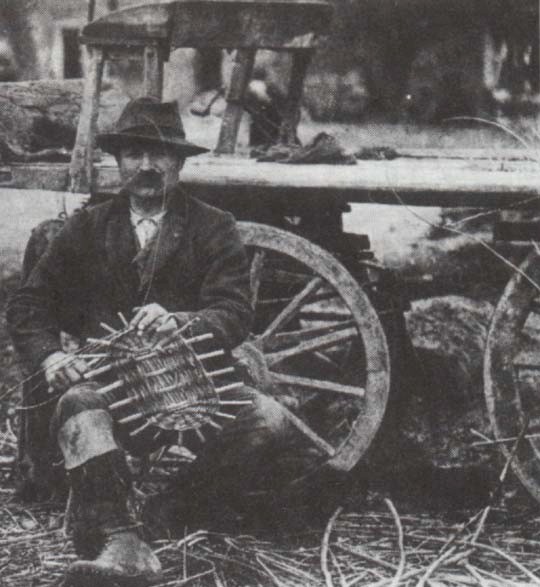
| Home Page |
Origin |
Coat of Arms |
Family Tree |
Celebreties |
Archives |
Discussion Group |
Guestbook |
Français |
Origin of the Vanier family name
Vannier is the French name for a trade; a craftsman who makes baskets for separating straw from the grain.
As time passed, the name Vannier developed and now has several ways of spelling it: Vanier, Vannier, Vanniere, Vanner, Vaner, Vaniere, Le Vanier, Le Vannier, Levanier, Le Vanner, Le Vasnier, Le Vennier, Le Venier and many more.
The family name Vanier exists at least since 1180. Yves Vanier discovered the following text which supports this claim (translated from old French):
"Richard Vanier is registered for the sum of 15 cents, paid by him [...] for concessions, promises and arrangements, taken by Hamon Le Bouteiller, Provost of Bayeux in the district of Ameville, for the king of England in 1180."
The original text can be found on page 26 of the publication Généalogie des Vannier, alias Le Vannier, Le Vanier, Le Vasnier, Le Vennier, Le Venier: Normandie, Maine, Poitou, etc. The author is Théodore Courtaux and the work was published in Paris in 1899 by the "Cabinet de l'Historiographie". According to Yves Vanier: "in the latin version at the bottom of the page, he is named Ricardo Vanier, which shows that our family name was already written with the same spelling as today". Yves adds that "Bayeux is not far from Honfleur (town where Guillaume Vanier was born) and in 1180 the king of England was also Duc of Normandie. In France, family names appeared around 1100, and the fact that
we can find a Richard Vanier in Normandie in a town close to Honfleur in 1180 mais be of significance for our family."
THE TRADE OF A VANNIER

Wicker Basket (Photo R. Nourry)
|
The trade of a vannier (basket maker) comes from the word "van" which designates a flat basket
with turned-up edges, made of willow, with two handles permitting separation of the straw from the grain.
The grain is placed in the van (basket) and shaken with the help of the handles. The ball, meaning the leftover straw,
was taken out and the grain stayed in the van. This work was very time consuming and strenuous.
|

A "Vannier" at work
|
The origin of the vannier trade is lost in time, although primitive potteries modelled in the shapes of "vannerie" have
been found. The corporation of the basket maker was organized under the reign of King Louis XI; it was divided into
"vanniers mandries", "vanniers cloturiers", and "vanniers faissiers". The term "vannerie" (basket making) appeared
in the thirteenth century and comes from the French word "van". It is in the nineteenth century that basket making
experienced a major expansion and Vanniers found new innovative objects to make.
Today, the basket makers "Vanniers" create baskets of all shapes, hood, all-purpose baskets, armchairs, trunks, cradles,
cradles with handles and even baskets for hot-air balloons.
|
WICKER
Willow is a tree that grows in damp surroundings (near rivers) and in swampy areas. The preferred regions for a
vannier (basket maker) are the Picardie, Ardennes and the north-east of France. However, the basked makers had to
travel to sell their products; therefore they became peddlers found all over France.
In the past, the primary material was wicker, from the willow tree. Ten thousand trees have to be planted for a
one-hectare plantation. In three months the plant reaches 2.5 metres (about 8 feet). The wicker is harvested during
the winter months, before the ascent of the sap. The branches were skinned, soaked, and sun-dried for a long time.
They were packaged in batches of 20-30 kg. A plantation can produce 1000 kg of wicker per hectare for about 20 years.
The basket maker also uses the hazel tree to build the basket frame around which the wicker is braided.
TOOLS OF THE BASKET MAKER
The basket maker uses very few tools: the slicer made of boxwood is used to slice the wicker. The punching tools are used
to make holes in the bottom. A knife completes this basic equipment but sufficient for the basket maker. As a matter of
fact the main tool is the basket maker’s hand.

Punch
(Photo F. Morellec)
|

Boxwood slicers
(Photo F. Morellec)
|

Pruning knife
(Photo F. Morellec)
|
Last updated 2009-04-25
Jean-Yves Vanier

This web page and its content is licensed under a Creative Commons Attribution-NonCommercial 4.0 International License.





